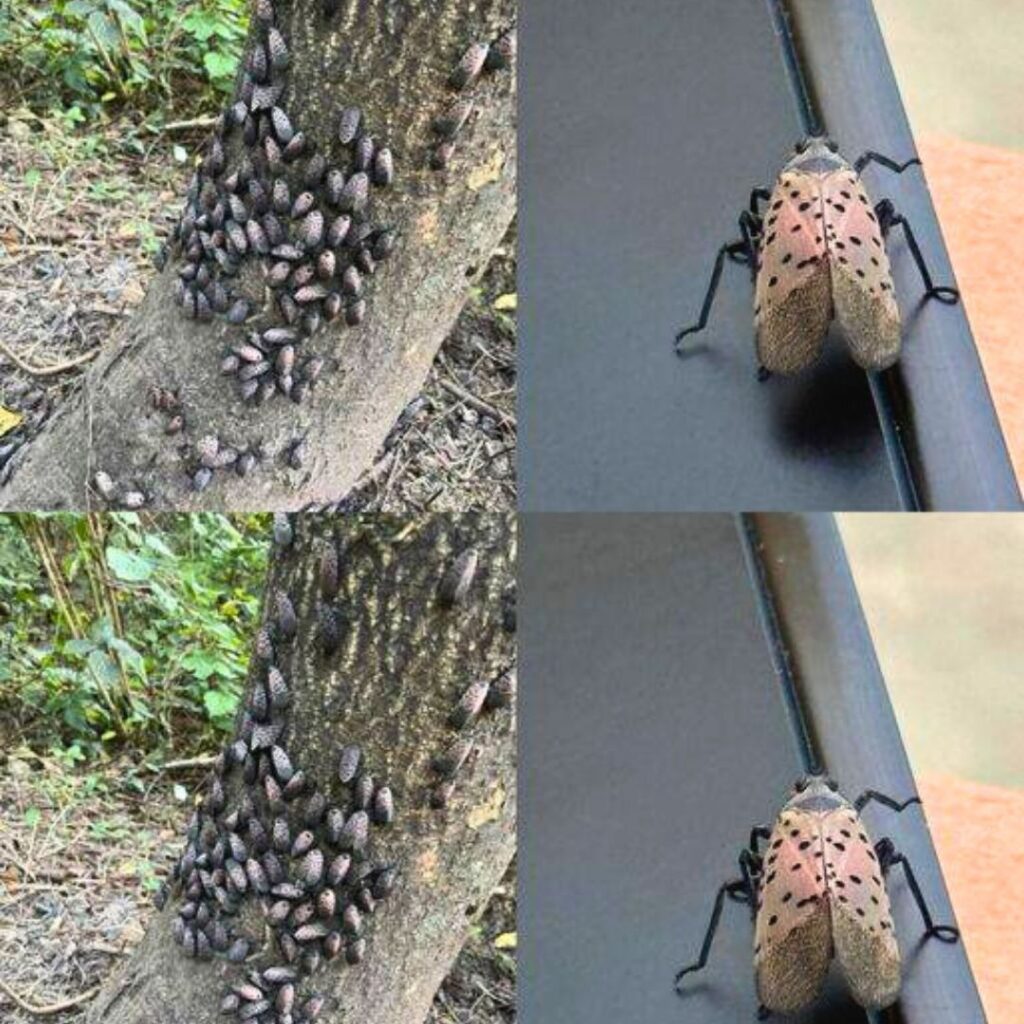
The spotted lanternfly (Lycorma delicatula) is an invasive insect that poses a serious threat to agriculture and ecosystems. Native to China, it was first detected in the U.S. in Pennsylvania in 2014 and has since spread across several states, wreaking havoc on crops and plants.
Why You Should Act Fast
Lanternflies feed on the sap of many trees and plants, weakening them and making them vulnerable to disease. They also excrete a sticky substance called honeydew, which promotes the growth of sooty mold—a fungus that blocks photosynthesis and further damages the plant.
How to Identify a Lanternfly
Adult lanternflies are about an inch long, with gray wings covered in black spots and striking red and black underwings. Their nymphs are black with white spots, later turning red as they mature. These insects use their needle-like mouthparts to pierce plants and drain sap, slowly depleting the plant’s life energy.
What You Should Do
If you spot a lanternfly, the best course of action is to eliminate it immediately. You can:
- Squash the adults and nymphs if possible.
- Destroy egg masses, which look like gray smears of mud, by scraping them into a bag filled with alcohol or hand sanitizer to kill the eggs.
Why It Matters
Taking action to control lanternfly populations is crucial for protecting agriculture, natural ecosystems, and the overall health of our environment. If left unchecked, these pests can cause significant damage to trees, plants, and crops, threatening both food production and ecological balance.